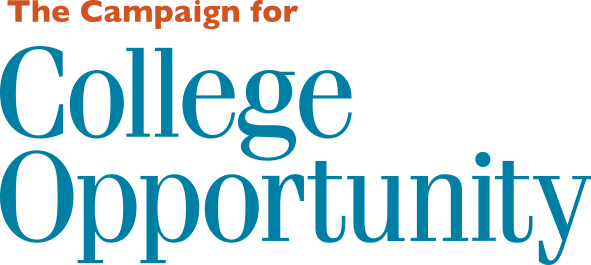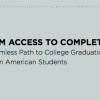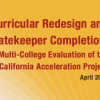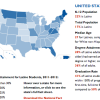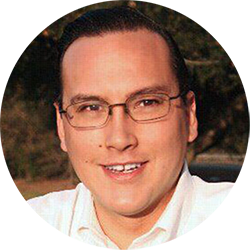
Alex Pader, 25, is in his senior year at California State University, Sacramento (CSUS), where he is a transfer student. He just completed his term as President of the Student Senate for California Community Colleges (SSCCC), the statewide organization that represents and advocates for students in California’s community colleges. Alex’s path to CSUS was a winding one, and he has a keen understanding of the California Community College system’s complexity and clear ideas about the need for improved student support services.
Alex grew up in the Northern California town of Napa, just 50 miles from San Francisco and world famous for its wine-making. His parents both have bachelor’s degrees, and in high school the central question among his peers was not, “are you going to college?” but rather, “which college are you going to?”
He graduated from New Technology High School in 2004 and moved to San Francisco, enrolling at City College of San Francisco (CCSF). Alex attended CCSF for four consecutive semesters, but at the conclusion of his time there, he remained ineligible to transfer to a four-year institution, and had not earned an associate’s degree or a technical certificate.
“I was taking some classes, part-time. I didn’t really know what I wanted to major in. I didn’t do very well. I didn’t have a lot of direction,”
he says. At CCSF, it was difficult to meet with counselors—the wait time to see one was typically a month.
Alex believes that counselors are best positioned to help students who know exactly what she or he wants. If a student wants to transfer to the University of California at Davis and major in animal biology, a counselor can help. Or if a student wishes to pursue a career technical education (CTE) as a firefighter, a counselor can get them there. But most students are like Alex: they come to college in search of those answers. For these students, counselors are less instrumental. “I do not blame the counselors. I know the pressures that they are under. They have 10- or 15- minute appointments…you’re in, you’re out…you ask a couple questions and hopefully they are able to help you out,” says Alex. Because Alex believes that a 15-minute counseling session is grossly inefficient to help students like him find the right path, a well-publicized resource center that provides reference information about careers and their educational requirements, majors and the associated careers, and the CTE programs available at the individual community colleges across the state would be a better compass for students and ultimately help reduce the dropout rate.
The California Community College system has nearly 3 million students, but according to a recent study tracking degree-seeking students between 2003 and 2009, less than one-third of all students completed. “There are a lot of people who take one semester or two semesters, then they drop out. They don’t come back. If you do poorly for a couple of semesters, you’re going to probably leave. That’s really what happened to me. I did poorly for three semesters and that was enough for me to say, ‘hey you know what, maybe this is the time for me to move on’ and I backed out,” Alex said. In 2005 he withdrew from CCSF and enrolled in the Silver State Helicopter Academy in January 2006.
“I heard an advertisement on the radio. I called.” At the time Silver State Helicopter Academy was the largest helicopter flight school in the world. Alex attended an open house. It was impressive. Held at an enormous hangar at the Oakland Airport, a couple hundred people attended and milled about the school’s impressive fleet of big, gleaming helicopters. Alex signed up and, as required by the Academy, his family paid the whopping $82,000 flat tuition up front. It was a two-year program but, by the end of 2007, the school declared bankruptcy, leaving students with incomplete flight training and massive loans.
With four semesters’ worth of coursework and $82,000 racked up in debt, Alex returned to Napa Valley College in the spring of 2008 where, after an initial exploration of a CTE path, he began taking courses for transfer to a California State University campus. Within two semesters he got into a groove, found his niche, and began to thrive. Reflecting on his experience at Silver State Helicopter Academy, “flight school put me under pressures where I had to learn. It taught me how to learn, taught me how to study, something I had not learned in high school or during my previous time in community college,” Alex said.
“I’m a big supporter of mandatory orientation or student success classes that teach students how to learn.
How do you take good notes? How do you maintain your calendar? How do you make sure you have enough time to study? That made all the difference in my success once I returned to Napa Community College.”
The lack of a common course numbering system has also been a problem for Alex and many other community college students. He had four semesters’ worth of classes from San Francisco that were incompatible with Napa classes. Despite belonging to the same college system, “you’re dealing with apples and oranges,” Alex says. Upon entering Napa, Alex submitted his CCSF transcripts to an evaluator to determine course compatibility. Is CCSF’s English 1A class equivalent to Napa’s English 120? Would CCSF’s Political Science 1 compute with Napa’s two-semester Political Science 100 and 101? “It makes it pretty difficult to figure out, if you just look at it on a piece of paper,” says Alex.
The process of evaluation is long and can take several weeks. It requires one to wait for the processing and delivery of official transcripts and then the actual evaluation time. While a counselor could help, their scope of knowledge is mostly limited to the region. “The system is so complex, one individual can’t possibly know it all,” says Alex.
The California Community College system is vast, comprised of 72 districts and 117 campuses. “At Napa, biology classes are hard to come by, so students take them at Santa Rosa or Solano Community Colleges. A counselor could probably tell you which class you need at one of those campuses, because those are the campuses nearby and because those are the ones they deal with regularly. But they probably wouldn’t be able to tell you about Butte College or Los Angeles City,” Alex explains.
At the smaller Napa Valley College, information about student resources was easier to come by than at CCSF. For the first time in his college career, Alex availed himself of services he had not known existed at CCSF. Observant professors referred students they saw struggling to the math and writing labs on campus. If Alex had trouble with math homework, he sought help from math lab tutors. He strengthened his writing skills in the writing lab, where he received help structuring and editing papers. Had he known these resources existed on the San Francisco campus, Alex feels he would have been less likely to withdraw.
In Napa, Alex became active in student life, specifically student government. His service in student government opened his eyes to how policy works on community college campuses. It inspired him. “I see public service, politics, and good policy as the best ways to help improve people’s lives and to make the world a better place,” he says.
Alex was able to complete the transfer curriculum and successfully enrolled at CSUS. He is currently pursuing a career in public service. He resides in Napa, where he is networking and exploring opportunities in the local political scene. He will graduate from CSUS this
year.
Student Success Indicator
Entering in a program of study within the first year. Alex’s story underscores the need for students to receive counseling and enroll in a program of study early. Research shows that community college students that enter into a program of study within the first year are nearly twice as likely to complete a certificate, associate degree, or successfully transfer to a four-year university than students that don’t.*
SOURCE: *Moore, C., Shulock, N. (2011). Sense of Direction: The Importance of Helping Community College Students Select and Enter a Program of Study. Institute for Higher Education Leadership & Policy, CSU Sacramento
